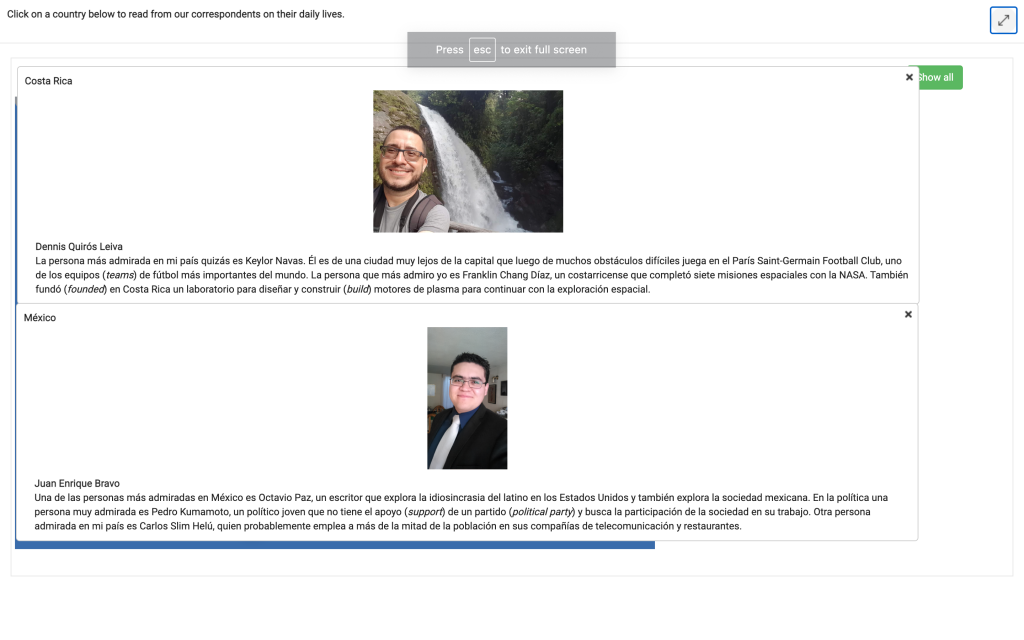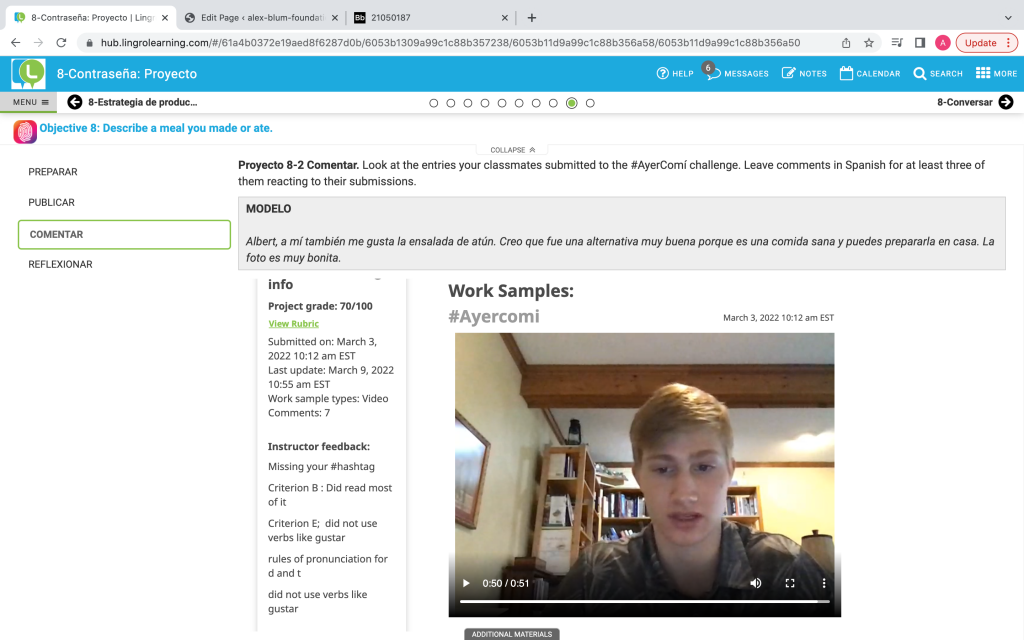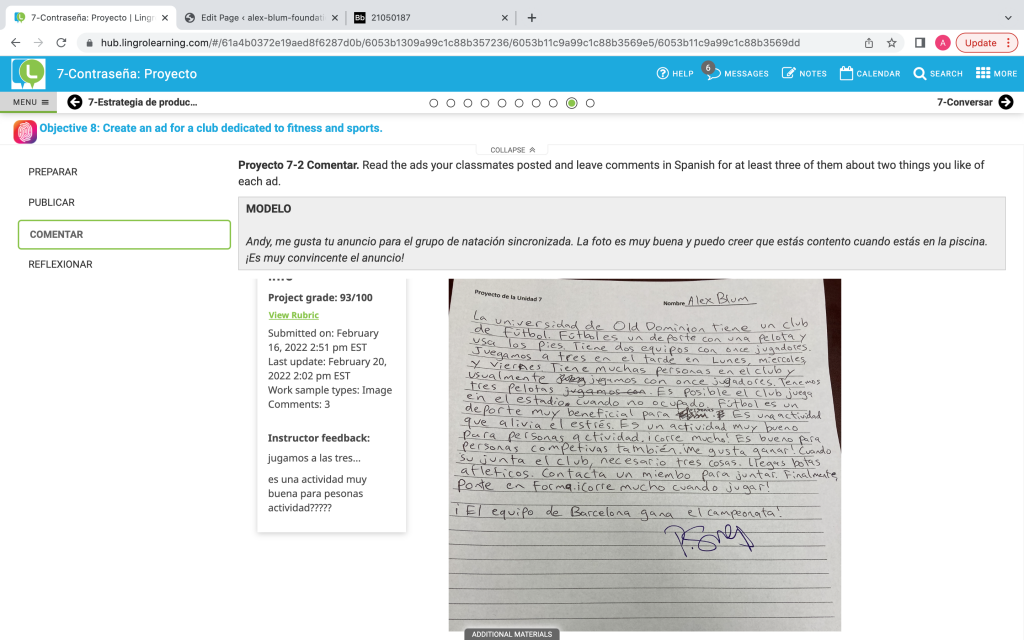Exploring Culture
This semester, my class and I learned a lot about the culture of Hispanic countries. Ways that we learned about this was through Talk abroad and the Exploración Cultura section. Both of these methods gave us a good insight into the different cultures of Spanish speaking countries. I liked how we discussed topics that are issues in the United States as well like LGBT, women in sports, and family.
These practices made me realize how similar we all are. During Talk abroad, I got the sense that I was talking to another classmate. It helped that my partner was my age, but it was interesting to see just how similar we all are. In Exploración Cultura, the best way we learned was through the testimonials from people from different Hispanic countries. They discussed the topics and how they were prevalent in their countries.

Engaging in Communities
I think that it is very important to be an active member in your own community as well as in the world community. Different cultures have different ways of life. It is important to try to understand other cultures in order to have good relations with these countries.
Interpersonal Communication
The TalkAbroad section of the course was very helpful for me. These two sessions helped me evaluate my comprehension and speaking skills in Spanish. I was nervous at first, but after several minutes, I was able to talk with my partner the same way I talked with my classmates.
The spontaneous modes of conversation were hard for me when I was talking with a native speaker. I found myself second guessing whether what I was saying made any sense. Yet, when I would do discussion boards, I had no doubt about what I was saying was right. These modes of communication helped me tremendously with my comprehension. I made plenty of mistakes, but that was a good thing. I learned way more from what I did wrong and it helped me get better at the language.
Artifacts
A good artifact is a portion or clip of an assignment. It needs to be carefully selected to provide evidence/proof that supports what you are saying in your reflection.
Your reflection will help you determine what that will be. It is a quest for quality. It will represent you academically and professionally, and have personal meaning. It can be written, audio, or video.
At the end, ask yourself if the artifacts best demonstrates your abilities and growth over time.
At the end of your reflection in each section, link or embed the assignment/artifact. If the assignment has multiple pages and seems to overwhelm the section, consider adding just the first page and offering to provide the rest upon request.
Presentational Speaking
The presentational speaking section of the course was an assignment that helped combine several things together. It brought reading comprehension, public speaking, and knowledge of the material into one.
Two presentations we gave were the “What you cooked” assignment and the “Meet my Family” assignment. Each of these assignments blended our knowledge of the material with our public speaking and presentational skills. I was ok at these presentations. One thing I would do differently was prepare a better outline for my presentation.

Presentational Writing
The presentational writing was one of the most challenging parts of the course for me. We were not allowed to use the notes from the course. It was the closest we got to a typical test we would have in other classes. We would get directions for what we had to write about, how many words we needed, and other requirements.
One activity we did was a pamphlet talking about an activity that would be happening on the campus. The requirements were details of where and when it would happen, the benefits from the activity, two catchy phrases and a photo or video to support the project.

Interpretive Listening
The interpretive Listening aspect of the course was also challenging for me. In this mode, we had an audio clip we had to listen to and answer questions about. Sometimes, it was difficult to understand what they were saying and I had to replay the clips in order to get the information needed.
Interpretive Reading
The interpretive reading was one of my favorite parts of the course. This section gave us readings that we had to look through to get information in order to answer questions.
Some of the challenges I faced from this part was some vocabulary that I had never seen before. I would have to look these things up and see what these words meant in order to understand what the readings were talking about. What i found most interesting was the sections on culture. I like learning about other cultures and their way of life. These readings helped me grow through my reading comprehension skills and my knowledge of Spanish vocabulary.